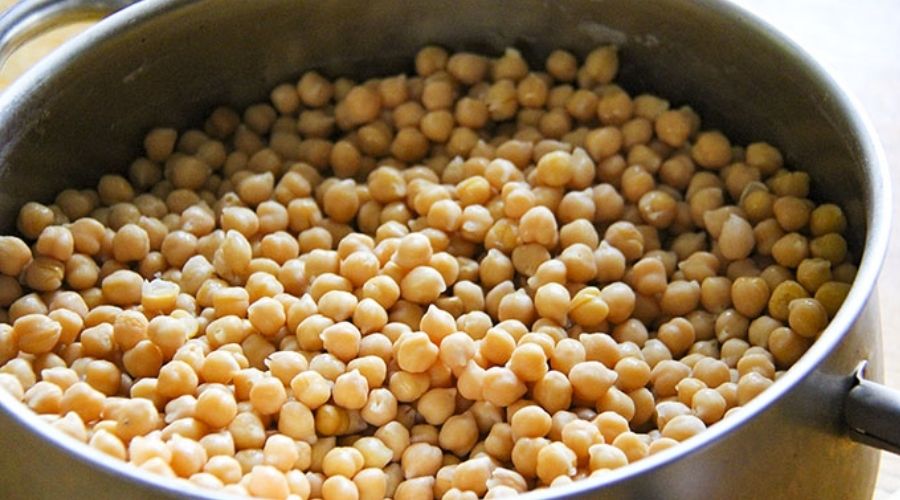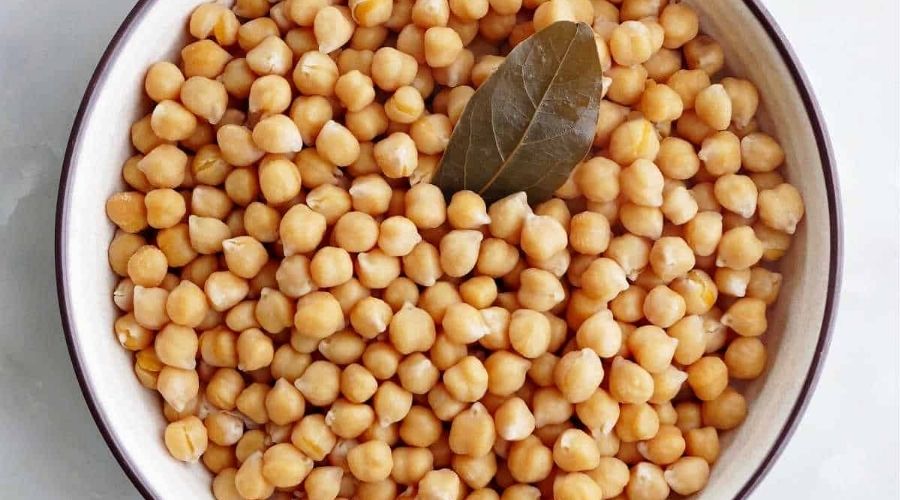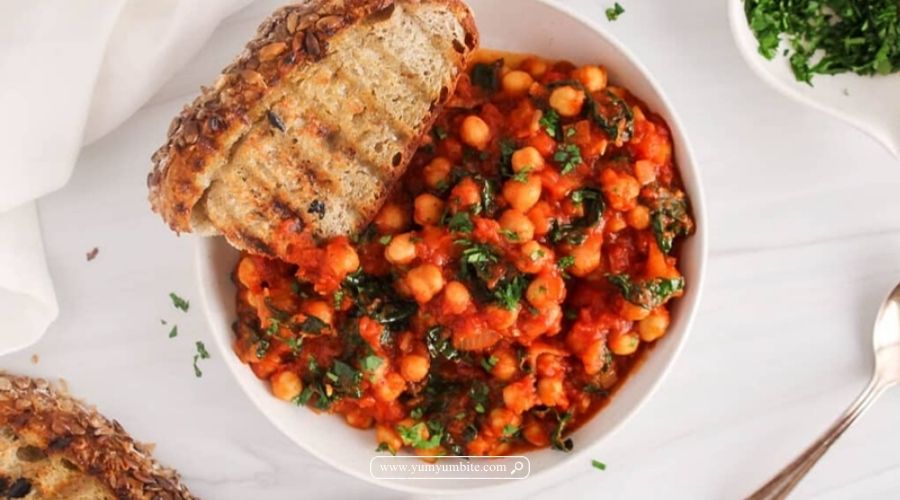Cooked chickpeas are a versatile and nutritious staple that can enhance a variety of dishes, from salads and soups to spreads and stews.
However, knowing how to store cooked chickpeas properly is essential for maintaining their flavor, texture, and safety.
Improper storage can lead to spoilage, waste, and a disappointing culinary experience.
Whether you’ve prepared a large batch or have leftovers, understanding the best practices for storing cooked chickpeas will allow you to enjoy them at their best.
In this article, we’ll cover effective storage methods, tips for maintaining quality, and how to tell when your chickpeas are no longer good to eat.
Why Storing Cooked Chickpeas Properly Matters
Storing cooked chickpeas properly is essential for maintaining their taste, texture, and nutritional value.
Chickpeas are a versatile ingredient that can be used in a variety of dishes, from salads and stews to hummus and curries.
However, if not stored correctly, they can spoil quickly, losing their delightful flavor and firmness.
Proper storage helps prevent the growth of bacteria and extends their shelf life, allowing you to enjoy this nutritious legume over several days.
Additionally, cooked chickpeas can absorb moisture from their environment, which can lead to a mushy texture and off flavors.
By using airtight containers and refrigerating or freezing them as needed, you can ensure that your cooked chickpeas remain fresh and ready to elevate your meals.
Ultimately, taking the time to store cooked chickpeas correctly not only enhances your culinary experience but also reduces food waste, making it a smart choice for any kitchen.
How to Store Cooked Chickpeas: A Complete Guide

Storing cooked chickpeas properly is vital for maintaining their flavor and texture.
Whether you’ve cooked a large batch for meal prep or have leftovers from a dish, here’s a comprehensive guide to help you store cooked chickpeas effectively.
1. Cool Down the Chickpeas
Before storing, allow the cooked chickpeas to cool to room temperature.
This prevents condensation from forming in the storage container, which can lead to spoilage and a change in texture.
2. Choose the Right Storage Method
Depending on how long you plan to keep the chickpeas, there are different storage methods:
- Refrigeration: If you plan to consume the cooked chickpeas within a few days, store them in the refrigerator. Place the chickpeas in an airtight container to keep them fresh for up to 3 to 5 days.
- Freezing: For longer storage, freezing is ideal. Portion the chickpeas into smaller amounts and place them in freezer-safe bags or airtight containers. They can last in the freezer for up to 3 months.
3. Portion Control
Consider dividing the cooked chickpeas into smaller portions before storing.
This allows you to thaw only what you need, reducing waste and helping to maintain the quality of the remaining chickpeas.
4. Label and Date
Always label your storage containers or bags with the date of storage.
This helps you keep track of how long the chickpeas have been stored, ensuring you use them while they’re still fresh.
5. Thawing Frozen Chickpeas
When you’re ready to use your frozen chickpeas, you can thaw them in the refrigerator overnight or use them directly in cooked dishes.
If you need them quickly, you can also place them in a microwave-safe bowl with a little water and microwave them for a few minutes until thawed.
6. Check for Quality
Before consuming stored chickpeas, always check for signs of spoilage. Look for any off smells, discoloration, or changes in texture. If anything seems off, it’s best to discard them.
7. Creative Uses
Cooked chickpeas are versatile and can be incorporated into various dishes.
If you have leftovers, consider using them in salads, soups, or as a topping for grain bowls.
By following these guidelines, you can ensure that your cooked chickpeas remain delicious and ready to enhance your meals whenever you need them.
Proper storage not only extends their shelf life but also preserves the nutritional benefits that make chickpeas a fantastic ingredient in your kitchen.
What to Look for While Storing Cooked Chickpeas
When it comes to storing cooked chickpeas, paying attention to a few key factors can help ensure they remain fresh and safe to eat.
Here’s what to look for:
1. Cooling Properly
Make sure the cooked chickpeas are completely cooled to room temperature before storing.
Cooling them properly helps prevent condensation inside the storage container, which can lead to spoilage and a mushy texture.
2. Airtight Containers
Choose airtight containers or resealable bags for storage. This prevents air and moisture from entering, which can cause the chickpeas to dry out or spoil.
Glass containers or high-quality plastic bags are ideal options.
3. Portion Sizes
Consider storing the cooked chickpeas in portion sizes based on your typical usage. This makes it easier to thaw or use only what you need, helping to minimize waste and keep the remaining chickpeas fresh.
4. Storage Temperature
Determine how long you plan to store the chickpeas. If you intend to use them within a few days, refrigerate them at a temperature below 40°F (4°C). For longer storage, freeze them at 0°F (-18°C) or lower.
5. Labeling
Label your storage containers with the date of storage.
This helps you keep track of how long the cooked chickpeas have been stored, ensuring you consume them while they’re still fresh and safe to eat.
6. Moisture Control
Ensure the chickpeas are dry before storing them. Excess moisture can lead to spoilage or mold growth.
If the chickpeas were cooked in a liquid, allow them to drain well before placing them in storage.
7. Quality Checks
Before consuming stored chickpeas, always check for any signs of spoilage. Look for unusual odors, discoloration, or a slimy texture.
If you notice any of these signs, it’s best to discard them.
By being mindful of these factors, you can effectively store cooked chickpeas, ensuring they remain delicious and nutritious for your meals.
Proper storage not only enhances your culinary experience but also helps minimize food waste in your kitchen.
How to Choose the Right Accessories for Storing Cooked Chickpeas

Selecting the right accessories for storing cooked chickpeas is crucial for maintaining their quality and freshness.
Here are some important considerations to help you choose the best storage options:
1. Airtight Containers
Opt for airtight containers made of glass or high-quality plastic.
These containers effectively seal out air and moisture, preventing the chickpeas from drying out or absorbing unwanted odors.
Look for containers with secure lids that create a tight seal.
2. Freezer-Safe Bags
If you plan to freeze cooked chickpeas, use freezer-safe resealable bags. These bags are designed to withstand low temperatures and prevent freezer burn.
Make sure to remove as much air as possible before sealing to maintain the quality of the chickpeas.
3. Portion-Control Accessories
Consider using small containers or bags for portion control. This makes it easier to store and thaw only the amount you need, reducing waste and keeping the remaining chickpeas fresh for future use.
4. Labels and Markers
Having labels and a permanent marker on hand is essential for tracking storage dates.
Label your containers or bags with the date of storage to ensure you consume the chickpeas while they’re still fresh.
5. Steamable Pans
If you plan to reheat your cooked chickpeas by steaming, consider using steamable pans or baskets.
These accessories can help maintain the chickpeas’ texture and moisture during reheating.
6. Storage Jars
For those who prefer a more eco-friendly option, glass jars with airtight seals are excellent for storing cooked chickpeas.
They are reusable and help keep your kitchen organized.
7. Mixing Bowls with Lids
If you don’t have airtight containers, large mixing bowls with lids can be a temporary solution. Just ensure that the lid fits securely to minimize air exposure.
By choosing the right accessories for storing cooked chickpeas, you can ensure they remain fresh, flavorful, and ready to enhance your meals whenever you desire.
Proper storage not only preserves their quality but also contributes to a more organized and efficient kitchen.
How to Tell If Cooked Chickpeas Are Bad After Storing
Determining whether cooked chickpeas are still safe and enjoyable to eat is crucial for maintaining food safety and quality.
Here are key indicators to look for when assessing stored cooked chickpeas:
1. Smell
The first sign of spoilage is often the smell. Fresh cooked chickpeas should have a mild, nutty aroma.
If you detect any sour or off odors, it’s a strong indication that they have spoiled and should be discarded.
2. Visual Inspection
Examine the chickpeas for any visible signs of spoilage. Fresh chickpeas should have a consistent color and appearance.
Look for discoloration, dark spots, or any signs of mold, which may appear as fuzzy patches. If you see any of these signs, it’s best to throw them away.
3. Texture
Check the texture of the cooked chickpeas. They should feel firm and slightly creamy. If they are excessively mushy, slimy, or hard, this can indicate spoilage.
Spoiled chickpeas may also develop an unappealing grainy texture.
4. Taste Test
If the chickpeas appear fine but you’re still unsure, you can perform a small taste test.
If they taste sour or have an off flavor, it’s best to err on the side of caution and discard them.
5. Storage Duration
Keep track of how long the cooked chickpeas have been stored. In the refrigerator, they should ideally be consumed within 3 to 5 days.
If they’ve been in the freezer for more than 3 months, their quality may deteriorate, even if they don’t show visible signs of spoilage.
6. Packaging Integrity
Check the packaging for any signs of damage, such as punctures or leaks.
Damaged packaging can expose the chickpeas to air and moisture, increasing the risk of spoilage.
By being vigilant and knowing what to look for, you can ensure that your cooked chickpeas remain safe and delicious, allowing you to enjoy their nutritional benefits without any concerns about food safety.
1. How long can I store cooked chickpeas in the refrigerator?
Cooked chickpeas can be stored in the refrigerator for about 3 to 5 days.
Make sure they are kept in an airtight container to maintain their freshness.
2. Can I freeze cooked chickpeas?
Yes, you can freeze cooked chickpeas. When stored in freezer-safe bags or airtight containers, they can last for up to 3 months in the freezer.
3. How should I cool cooked chickpeas before storing them?
Allow the cooked chickpeas to cool to room temperature before storage.
This prevents condensation from forming in the container, which can lead to spoilage.
4. What type of container is best for storing cooked chickpeas?
Airtight containers or resealable plastic bags are ideal for storing cooked chickpeas. These options help keep out air and moisture, preserving their quality.
5. How can I reheat frozen chickpeas?
To reheat frozen chickpeas, you can thaw them in the refrigerator overnight or add them directly to cooked dishes.
Alternatively, you can microwave them with a little water for a quick thaw.
6. Should I label my storage containers?
Yes, labeling your storage containers with the date helps you track how long the chickpeas have been stored, ensuring you use them while they’re still fresh.
7. How can I tell if cooked chickpeas have gone bad?
Signs of spoilage include off smells, discoloration, a slimy texture, or visible mold.
If you notice any of these signs, it’s best to discard the chickpeas.
Conclusion
In conclusion, mastering the art of storing cooked chickpeas is key to enjoying their delightful taste and health benefits long after they’ve been prepared.
By following the guidelines outlined in this article—such as proper cooling, using airtight containers, and monitoring storage times—you can ensure that your chickpeas remain fresh and safe to eat.
Whether you’re reheating them for a quick meal or incorporating them into a new recipe, knowing how to store cooked chickpeas effectively will enhance your culinary experience and minimize food waste.
Embrace the convenience of storing cooked chickpeas and savor their nutritious goodness whenever you need them!
References
- https://www.inspiredtaste.net/26952/how-to-cook-dried-chickpeas/
- https://www.themediterraneandish.com/how-to-cook-chickpeas/
- https://maureenabood.com/technique-how-to-prepare-dried-chickpeas/
- https://www.loveandlemons.com/roasted-chickpeas/
- https://toriavey.com/how-to-soak-and-cook-chickpeas/


